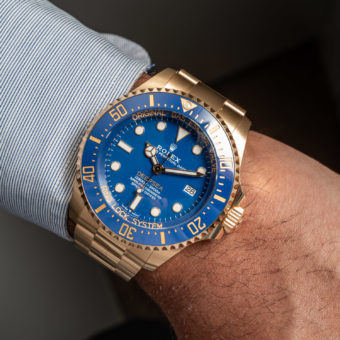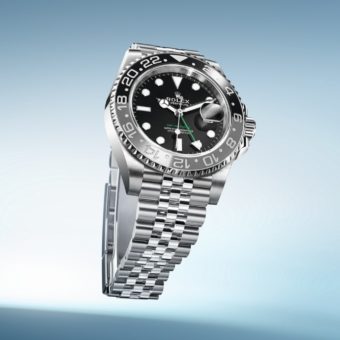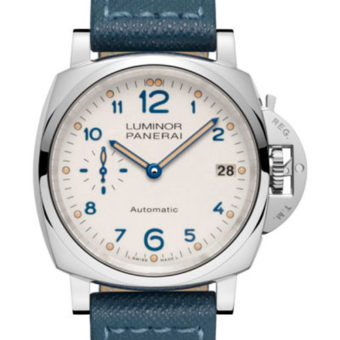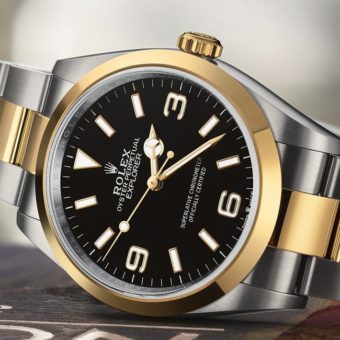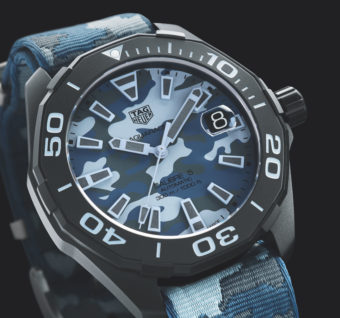Meteorites are extraterrestrial objects that have passed through the atmosphere and landed on Earth. They can be divided into two different types: stone meteorites and iron meteorites. Most meteorite dials are made from the latter, which make up only four percent of all meteorites. Iron meteorites were born in the core of four-billion-year-old asteroids that slowly cooled over millions of years as they flew through space, thus creating distinctive Widmanstätten patterns or Thomson structures, figures of long nickel-iron crystals inside the meteorites. These crystal structures occur only in meteorites and not on Earth. To make a dial from a meteorite, the stone is first cut into thin slices, then polished and finally treated with acid to make its characteristic patterns visible.
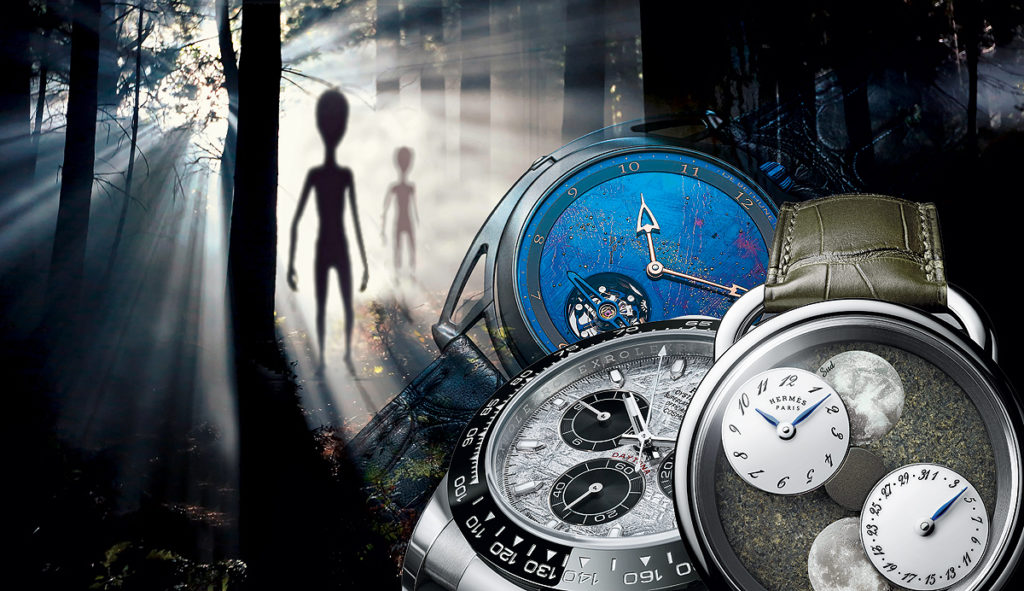
Rolex Cosmograph Daytona
Rolex has often used dials made of meteorite, for example, on the Day-Date and GMT-Master II. New meteorite dials for the Daytona in white, yellow or rose gold were added to the collection in 2021. The subdials remain black for better readability. Automatic in-house Caliber 4130 keeps time inside the 40-mm-diameter precious metal cases. Equipped with a column wheel and vertical coupling, the movement amasses a 72-hour power reserve. Rolex certifies this model, like all its watches, as a “Superlative Chronometer” and promises that it will neither gain nor lose more than 2 seconds per day.
White gold, 40 mm, automatic manufacture Caliber 4130, chronometer, $29,700.
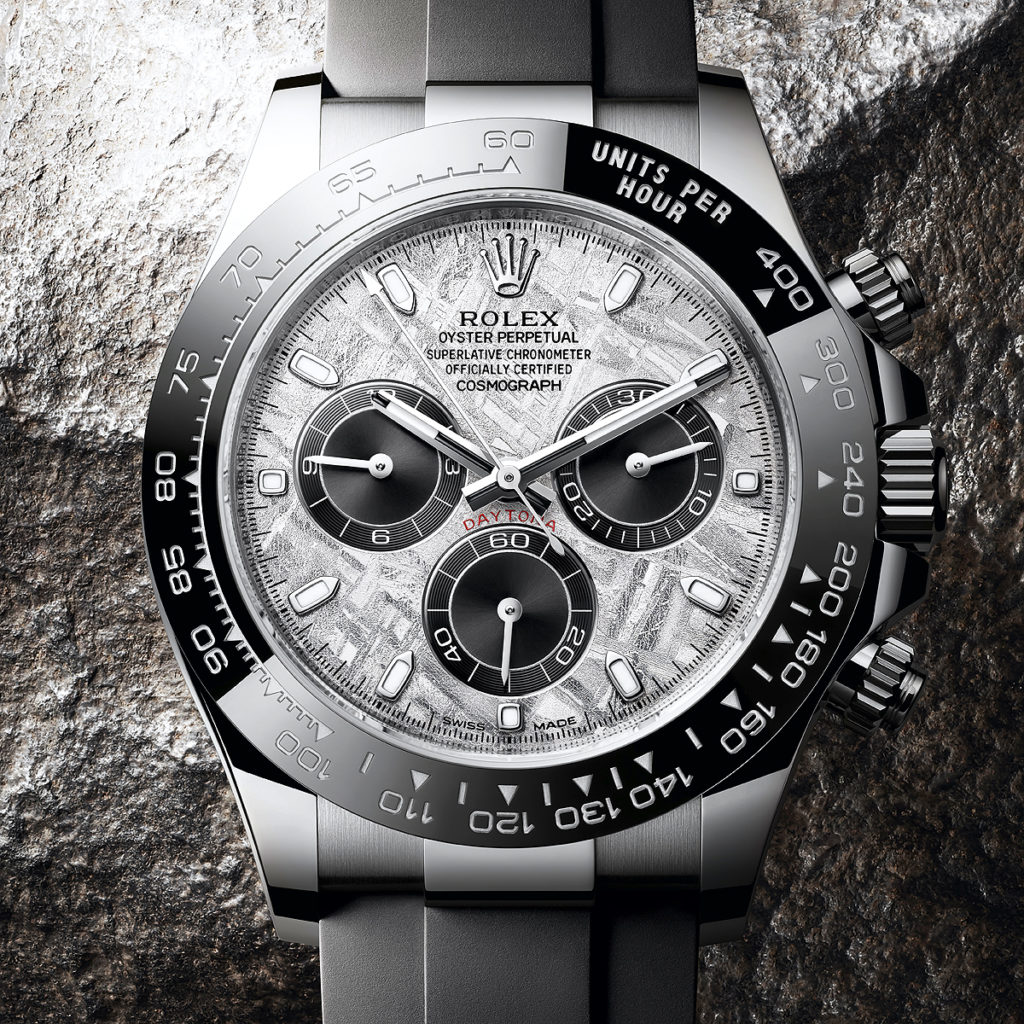
De Bethune DB28XP Meteorite
De Bethune takes its iron meteorite dial one step further. The Muonionalusta meteorite used here is among the oldest known specimens: it plunged to earth in Scandinavia more than a million years ago. After acid treatment, the material is thermally blued to represent a night sky, onto which the buyer can have any desired combination of stars applied as tiny balls of white gold. A titanium balance with white-gold regulating weights can be seen at the 6. The manufacture’s own hand-wound caliber amasses a 6-day power reserve. The unusually shaped, thermally blackened and partially skeletonized case is made of the heavy metal zirconium.
Zirconium, 43 mm, manually wound manufacture Caliber DB 2115 V7, 10 pieces, $138,000.
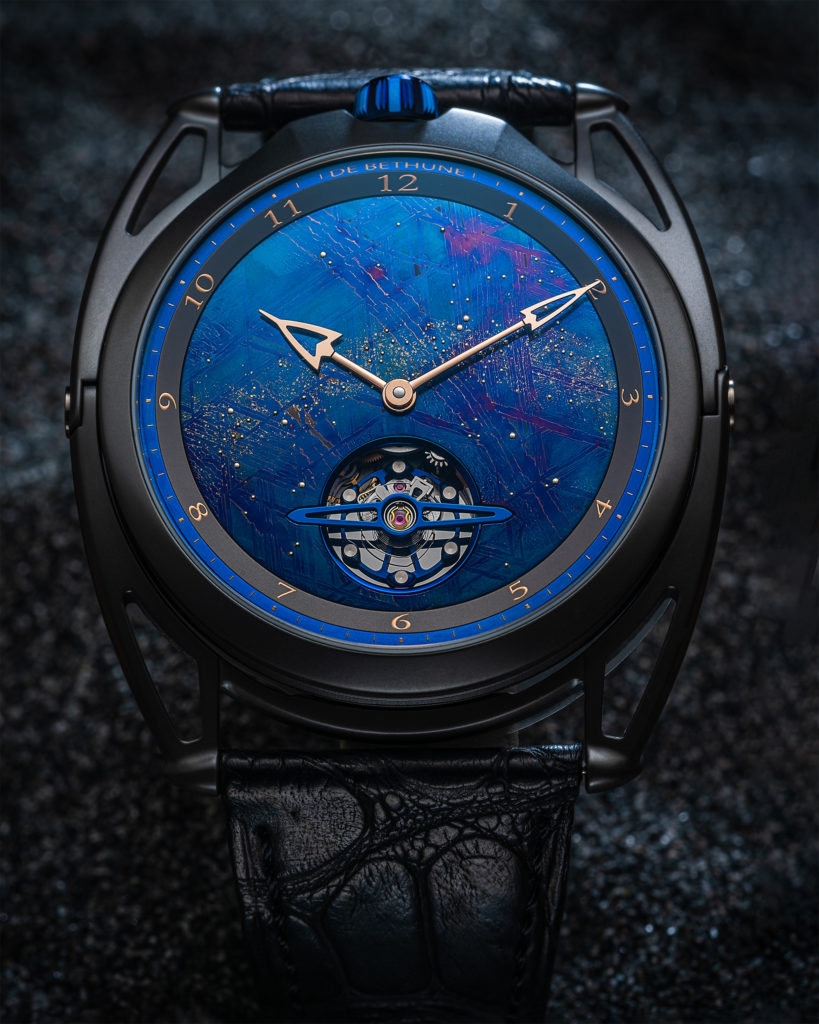
Omega Speedmaster Moonwatch 321 Platinum
Omega relies on ordinary iron meteorites with their fascinating patterns for the dial of the Speedmaster Grey Side of the Moon “Meteorite” ceramic watch, but the Moonwatch 321 Platinum has totalizers made from a very special meteorite that flew to Earth from the moon. When larger asteroids strike the lunar surface, rock from our Earth’s moon can be hurled into space and, if it flies toward Earth and is large enough not to completely burn up in the Earth’s atmosphere, it lands on our planet. The origin of these lunar meteorites has been proven beyond doubt by comparing them with rock samples brought back to Earth by the Apollo missions. This material is a perfect match for the Moonwatch with Caliber 321 because this model’s case houses a reconstruction of the historic hand-wound caliber that powered all Speedmaster models that have ever flown to the moon. The movement was first used in a Speedmaster in 1957 and later accompanied Ed White on the first American spacewalk, Buzz Aldrin on the first moon landing and a number of other astronauts. The case is made of a special platinum alloy mixed with gold and has a black ceramic bezel with an enamel scale. The base dial is made of onyx. Caliber 321 can be viewed through a pane of sapphire window in the caseback.
Platinum, 42 mm, manually wound manufacture Caliber 321, $59,400.
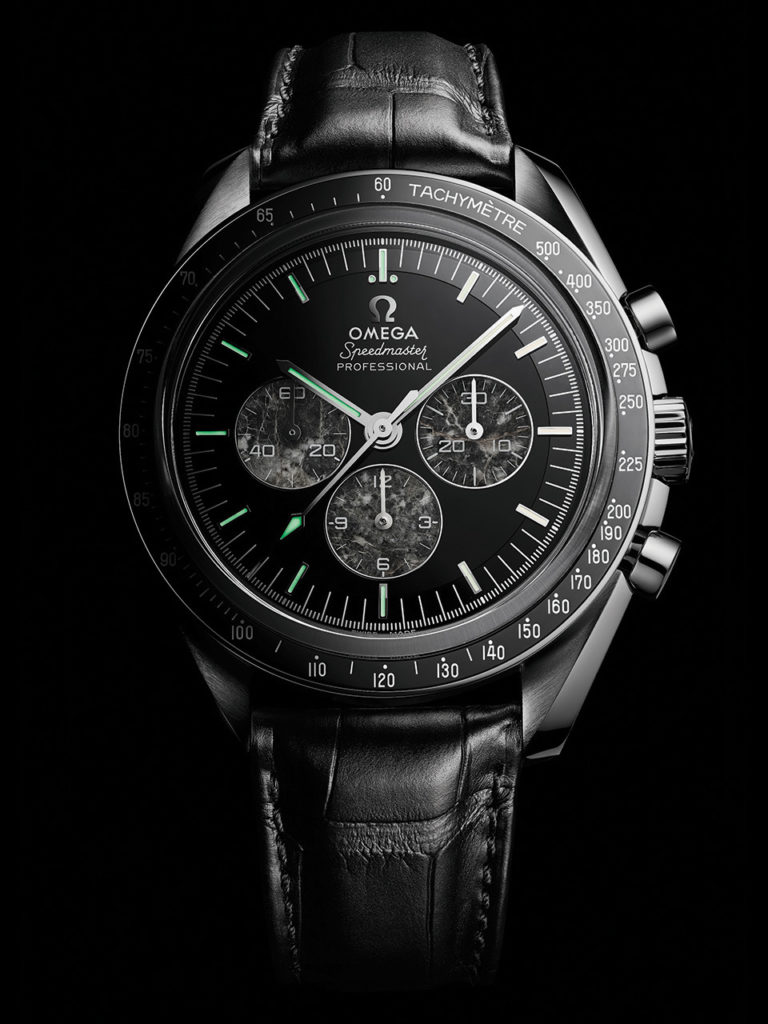
Hermès Arceau l’heure de la lune Martian meteorite
This Hermès watch combines two moons made of mother-of-pearl with a dial made of an extremely rare Martian meteorite. These meteorites were formed in a similar way to the lunar meteorites: an asteroid struck Mars, and in the process, hurled rocks from the planet’s surface outward into space and beyond the planet’s gravitational field. Parts of this debris reached the Earth. This is the only material from another planet that exists on Earth. On the watch, two dials for the time and date revolve around a movable central axis and always remain vertical despite their rotation. They cover the two moons in such a way that the moons’ visible surfaces reflect the current lunar phases in the Southern and Northern Hemispheres. However, Hermès turns our world upside down and shows the moon-phase of the Southern Hemisphere in the upper half of the dial.
Platinum, 43 mm, automatic manufacture Caliber H1837 with moon-phase module by Chronode, 2 pieces, price upon request.

Piaget Altiplano
Piaget’s limited-edition Altiplano combines a rose-gold case and a rose-gold-plated meteorite dial. The face is made of an iron meteorite, which is sliced, polished and etched to reveal its Widmanstätten patterns and then electroplated with gold. The manufacture caliber can be viewed through a window of sapphire crystal in the caseback. Thanks to the caliber’s low height of only 3 mm, the entire watch is an ultra-thin 6.36 mm.
Rose gold, 40 mm, automatic manufacture Caliber 1203P, 50 pieces, $29,200.
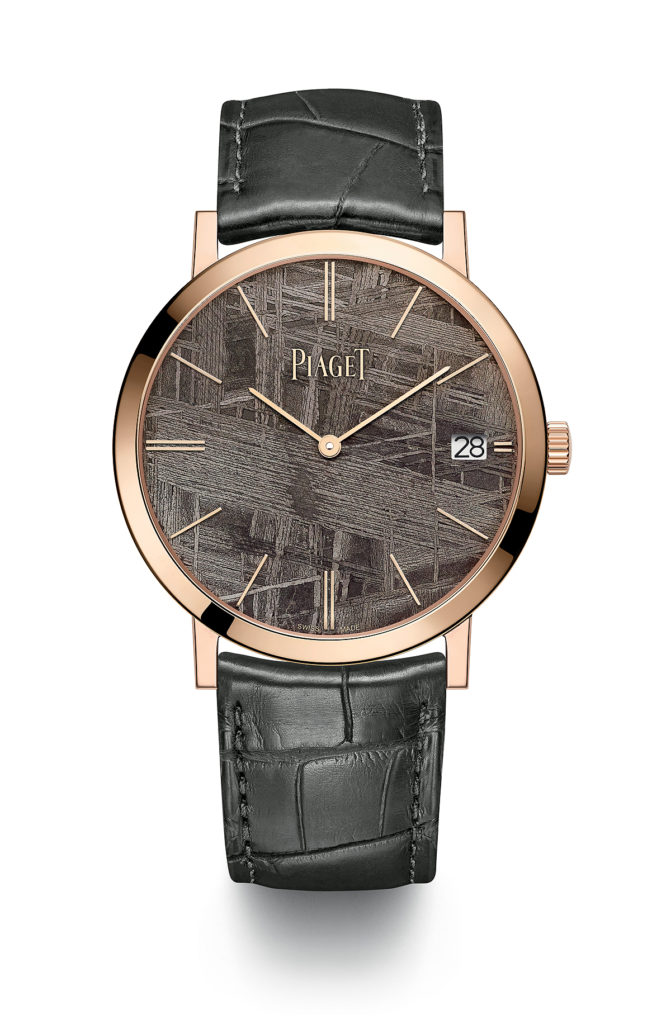
This article first appeared in the WatchTime Special Design Issue 2022, on sale now.

